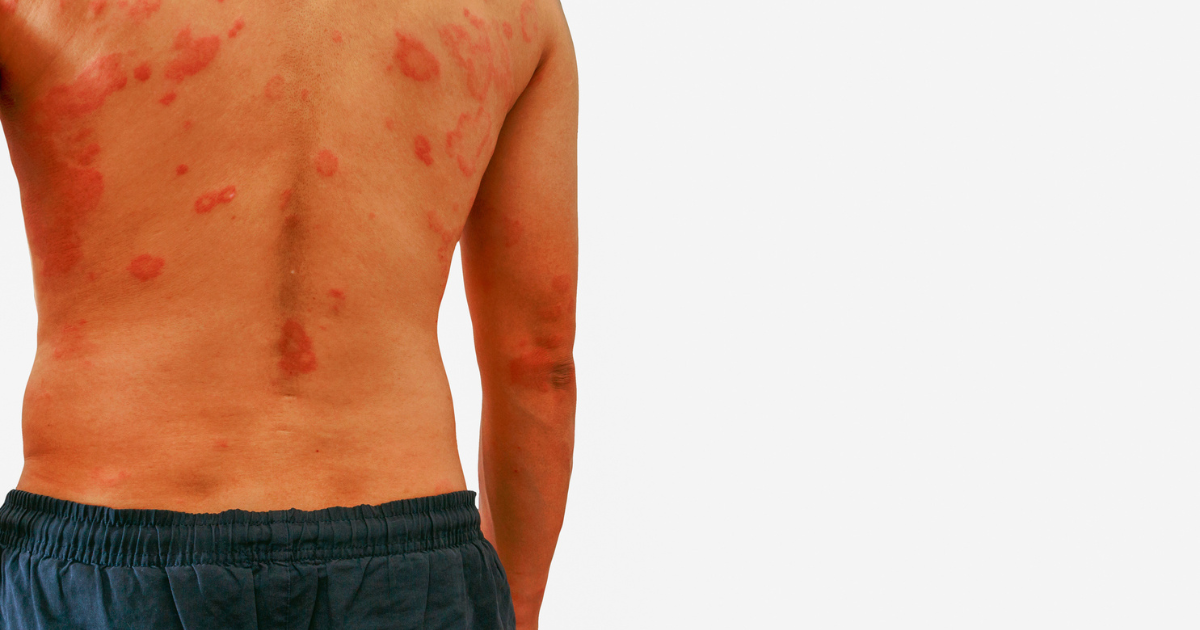Autoimmune and blistering diseases: What you need to know about bullous pemphigoid, pemphigus and mucous membrane pemphigoid

Autoimmune blistering skin diseases are not very common. But for those who are inflicted with these chronic conditions, they can cause great discomfort, including itching, pain and disability. They can even be fatal, if left untreated.
Autoimmune blistering skin diseases, also known as autoimmune bullous disorders, are caused by the body’s immune system mistakenly attacking healthy skin tissue. This can result in blistering lesions that primarily affect the skin and mucous membranes such as the mouth, eyes and nose. Autoimmune blistering skin disorders are not contagious. While there is no cure for these conditions, doctors can provide treatments to help heal the blisters and suppress these diseases into remission.
Bullous Disease Clinic
The Nebraska Medicine Bullous Disease Clinic, the only one of its kind in the state, provides dedicated and experienced treatment and lifelong management of these types of skin conditions.
“Autoimmune blistering skin diseases can come on suddenly, spread quickly and can be complex to treat,” says Corey Georgesen, MD, Nebraska Medicine dermatologist and dermatopathologist. “If not treated effectively and in a timely manner, they can lead to infections and other complications that may require hospitalization.”
Dr. Georgesen and Erin Barrett, MD, Nebraska Medicine dermatologist and director of UNMC Clinical Trials, run the clinic. Dr. Barrett has specialized in treating these conditions for 10 years and was previously the Director of Bullous Disease at BWH-Harvard Medical School. The two have treated hundreds of patients with autoimmune blistering diseases, providing the most -up-to-date treatments. The clinic also offers cutting-edge clinical trials to many of its patients.
“We are experts in treating these rare diseases and use the most current therapies available to provide the best outcomes for our patients,” says Dr. Barrett. “Many of these diseases are chronic, lifelong conditions. Our goal is to put them into long-term remission and gradually minimize the patient’s dependence on immunosuppression drugs. Our patients also have access to clinical trials, which give them an opportunity to try the latest cutting-edge therapies that are not yet available to the general public.”
Dr. Georgesen has dermatopathology expertise, which allows the clinic to use highly advanced diagnostic techniques to provide a more accurate and definitive diagnosis. These include techniques like direct immunofluorescence, indirect immunofluorescence, salt split evaluation, ELISA, immunoblotting, FISH and electron microscopy.
What causes autoimmune blistering diseases
Doctors don’t know exactly what causes the immune system to malfunction.
As mentioned, these skin conditions occur when the immune system erroneously attacks the skin. More specifically, your immune system makes proteins called antibodies which normally attack bacteria and other foreign invaders that might make you sick. With this group of autoimmune skin disorders, the immune system produces proteins that attack the substances that keep the inner and outer layers of the skin together. This causes the two layers to separate and allows fluid to collect, causing blisters to form.
It is believed that some people have genes that increase their risk of developing these disorders. In other cases, it may be triggered by factors such as:
- Taking certain medications like blood pressure medications or certain antibiotics
- Certain ancestries
Some of the most common conditions treated at the clinic include:
- Bullous pemphigoid
- Pemphigus
- Mucous membrane pemphigoid
- Epidermolysis bullosa
- Hailey-Hailey disease
- Porphyria cutanea tarda
- Linear IgA disease
- Dermatitis herpetiformis
Drs. Georgesen and Barret discuss the three most common skin conditions seen in their clinic.
Bullous pemphigoid
Bullous pemphigoid is the most common autoimmune blistering disease, with fewer than 20,000 diagnosed among the U.S. population each year.
This skin disease is more common among older adults in their 60s to 80s.
Common symptoms include:
- Itchy skin that may develop weeks or months before blisters form
- Large, hard, fluid-filled blisters along the creases or folds in the skin often located in the abdomen, upper thighs or armpits
- Red or dark colored skin around the blisters
- Small blisters in the mouth or other mucous membranes
Bullous pemphigoid can sometimes be triggered by certain blood pressure meds, certain antibiotics or even specific cancer treatments.
The blisters will go away on its own in a few months. But for others, they may hang on for five years or more. Treatment usually involves anti-inflammatories and immunosuppression drugs that put the disease into remission.
Pemphigus
There are two varieties of pemphigus--pemphigus vulgaris and pemphigus foliaceus. Pemphigus vulgaris is more common in the U.S. and occurs most often among middle-aged and older people.
Pemphigus foliaceus is more common in countries such as Brazil and some areas of South America due to genetic and environmental factors. There is also a higher incidence in regions such as Turkey and North Africa.
Primary symptoms:
- Blistering, crusted sores that begin in the mouth and spread to the skin and genitals
- Blisters that are painful but don’t itch
- Blisters and sores that come on suddenly
These sores are sometimes mistaken for herpes. The disorder can be fatal if left untreated.
Risk factors:
- Jewish ancestry, particularly Ashkenazi
- Descendent from certain regions in Europe and Asia
- Certain medications, such as blood pressure drugs or specific antibiotics
Pemphigus is typically a life-long condition that can go into long-term remission with proper treatment. Current treatment entails immunosuppressive and immunomodulatory medications. Immunosuppressive drugs reduce the strength of the body’s immune system, while immunomodulatory drugs target certain pathways to turn down the proteins that attack the skin.
“There are many clinical trials in this disease group, so we are expecting new treatments coming down the pipeline soon,” says Dr. Barrett. Dr. Barrett is a past recipient of the International Pemphigus and Pemphigoid Foundation Research Grant and the 2022-2024 Blavatnik Therapeutics Challenge Award for developing targeted therapeutics for pemphigus.
Mucous Membrane Pemphigoid
Mucous membrane pemphigoid is one of the rarest immunosuppressive blistering skin conditions. It is a chronic condition estimated to occur in about 2 cases per 1 million people annually.
Primary symptoms:
- Blisters, ulcers and scarring that affects the eyes, mouth, nose, genitals and other mucous membranes
- Blisters, ulcers, pain and inflammation of the gums (gingivitis)
- Infection
- Severe cases can cause scarring, difficulty swallowing and blindness
“Mucous membrane pemphigoid is a potentially devastating disease that can result in permanent disability,” Dr. Georgesen says. “Early recognition and treatment are paramount. Patients with features of this disease should be referred to a board-certified dermatologist for diagnosis.”
Treatment consists of a combination of immunosuppressants aimed at quickly getting active inflammation under control and transitioning to long-term treatment that is safe and effective.
“Treatment with long-term immunosuppression puts these patients at risk for infection; therefore, coordination with a specialized care team to avoid complications is recommended,” notes Dr. Georgesen. “And while the goal of treatment is to induce remission, meaning a temporary recovery, there is potential for long-term relapse. This underscores the importance of establishing a relationship with a long-term care provider comfortable with treating this disease for life-long management.”
Need a skin evaluation?
Call 800.922.0000 to schedule an appointment with one of our skin specialists.







